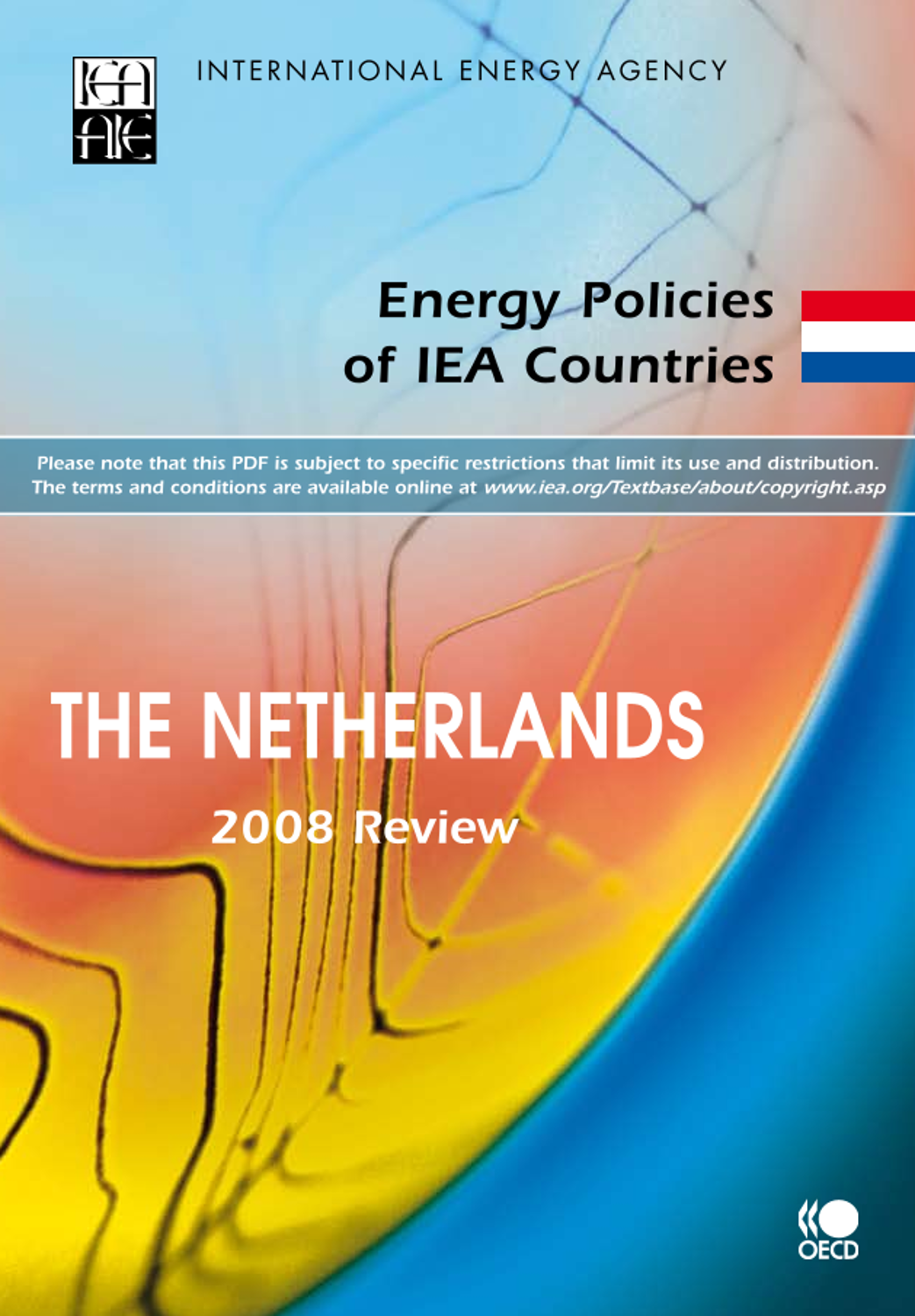
통계연감
Energy Policies of IEA Countries: The Netherlands ... Review
- 서명
- Energy Policies of IEA Countries
- 저자
- OECD/IEA
- 발행사항
- Paris : OECD/IEA, 2004-
소장정보
| 위치 | 등록번호 | 청구기호 / 출력 | 상태 | 반납예정일 |
|---|---|---|---|---|
이용 가능 (2) | ||||
| 자료실 | E203613 | 대출가능 | - | |
| 자료실 | P414560 | 대출가능 | - | |
이용 가능 (2)
- 등록번호
- E203613
- 상태/반납예정일
- 대출가능
- -
- 위치/청구기호(출력)
- 자료실
- 등록번호
- P414560
- 상태/반납예정일
- 대출가능
- -
- 위치/청구기호(출력)
- 자료실
책 소개
The energy policies of the Netherlands play an important role in ensuring energy security not only on a national level but in all of north-west Europe. The country’s strategic location makes it an important transit and trade hub for natural gas, oil and electricity. Furthermore, it has important natural gas production and a large oil refining industry. To enhance continental energy security, the government takes a leadership role in natural gas and electricity market development, pushing forward important policies to better integrate and harmonise the existing national and regional markets. One of the world’s leaders in energy research and development (R&D) management, the Netherlands is further increasing its R&D on energy technologies.
With sound policies already in place, the Netherlands has recently announced its intention to create an even more sustainable energy future. As part of this pledge, the government has set ambitious targets: to increase the share of renewables in the energy mix to 20% by 2020; to make a 2% annual efficiency improvement; and to lower greenhouse gas emissions by 30% by 2020 from the 1990 level. These objectives will not be easy to achieve. To ensure their attainment, the Netherlands will need not only well-designed policies but also their timely and effective implementation.
This review analyses the energy challenges facing the Netherlands and provides critiques and recommendations for further policy improvements. For example, it urges the government to provide policy continuity – such as in promotion regimes for renewable energy – to underpin a sustainable investment climate. It also highlights the need for closer co-ordination among national, regional and local authorities.
목차
Table of contents:
1. Executive Summary and Key Recommendations
PART 1. POLICY ANALYSIS
2. General Energy Policy
-Country Overview
-Supply-Demand Balance
-Government Regulatory Institutions and Other Organisations
-Key Energy Policies
-Energy Taxes and Subsidies
-Critique
-Recommendations
3. Sustainable Energy Policies
-Climate Change
-Air Quality
-Energy Efficiency
-Critique
Recommendations
4. Energy Security
-Oil
-Natural Gas
-Electricity
-Technology Development
-Critique
-Recommendations
5. Fossil Fuels
-Hydrocarbon Exploration and Production
-Natural Gas
-Oil
-Coal
-Critique
-Recommendation
6. Electricity
-Supply and Demand
-Market Overview
-Industry Structure
-Prices and Tariffs
-Critique
-Recommendations
7. Renewables
-Supply-Demand Balance
-Policies and Measures
-Critique
-Recommendations
8. Nuclear Power
-Overview
-Nuclear Policy
-Nuclear Fuel Cycle and Radioactive Waste
-Research and Development
-Critique
-Recommendations
PART III. ENERGY TECHNOLOGY
9. Energy Research and Development
-Overview
-Funding
-R&D Activities
-International Collaboration
-Public-Private Partnerships
-Critique
-Recommendations
PART IV. ANNEXES
A. Organisation of the Review
B. Energy Balances and Key Statistical Data
C. International Energy Agency "Shared Goals"
D. Glossary and List of Abbreviations
